In Remote Norway, Kajola Morewood and Sydney Pascal Learn About Sealskin Tanning

Kajola Morewood (left) and Sydney Pascal show off their sealskin hides. (Photo courtesy Kajola Morewood)
Posted on | Updated
The Aboriginal Gathering Place staff members attended a once-in-a-lifetime workshop in Norway for five days of practical learning and cultural exchange.
Out in the Norwegian Sea are the islands of Hysvær, a designated world heritage site and nature conservancy. Locals tend to eider ducks by building homes for them lined with dried seaweed, while a small herd of sheep wanders according to the tides. In this remote setting, workshop participants engaged in a unique opportunity for cultural exchange and reflection.
Sophie Kleppe and Roni Ohman, the founders of Ulu of Norway, hadn’t done a sealskin tanning workshop in over a decade. Sydney and Kajola were among the 12 students who participated in the opportunity.
For Sydney, Aboriginal Programs Coordinator with the Aboriginal Gathering Place (AGP), the trip started through a friend and hide-tanning mentor. “She has been following Ulu of Norway and mentioned it as something we could do together. She has been collaborating with some First Nation communities on Vancouver Island who have harvested seals. This trip was the perfect opportunity to learn traditional methods of treating and working with seals and to be able to share the teachings afterwards. I told Kajola, who was able to join us as well.”
Kajola notes the learning she and Sydney undertook aligns squarely with the AGP’s broader mandate to provide Indigenous students with culturally appropriate support encompassing both traditional and contemporary artistic and cultural expressions of Indigenous peoples.
“This trip offers a passing down of traditional knowledge — knowledge we don’t have access to where we’re located,” Kajola says. “We’re now able to bring these lessons to our Indigenous students, some of whom are Inuit, or — like myself — may have involuntarily lost contact with their ancestral communities and cultures. This trip helped us build another pathway to practices, skills and traditions that might otherwise remain out of reach for our students. Instead of reading about these things in books, we’re able to speak and teach from direct experience about these animals and their crucial importance to this unique community.”

Two eider ducks on the chilly waters of Hysvær

Grazing sheep in the hills of Hysvær
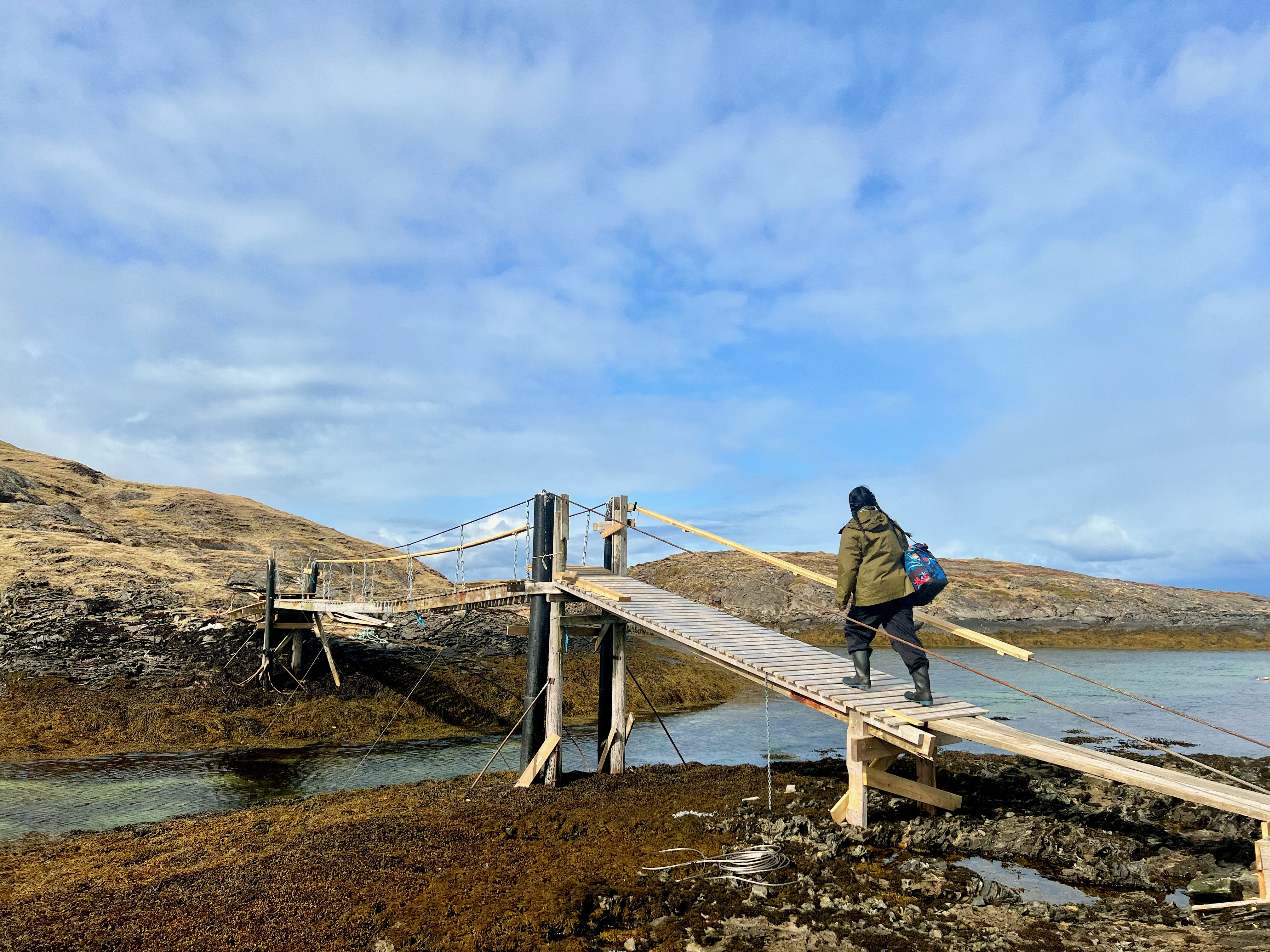
Sydney walking across the narrow footbridge
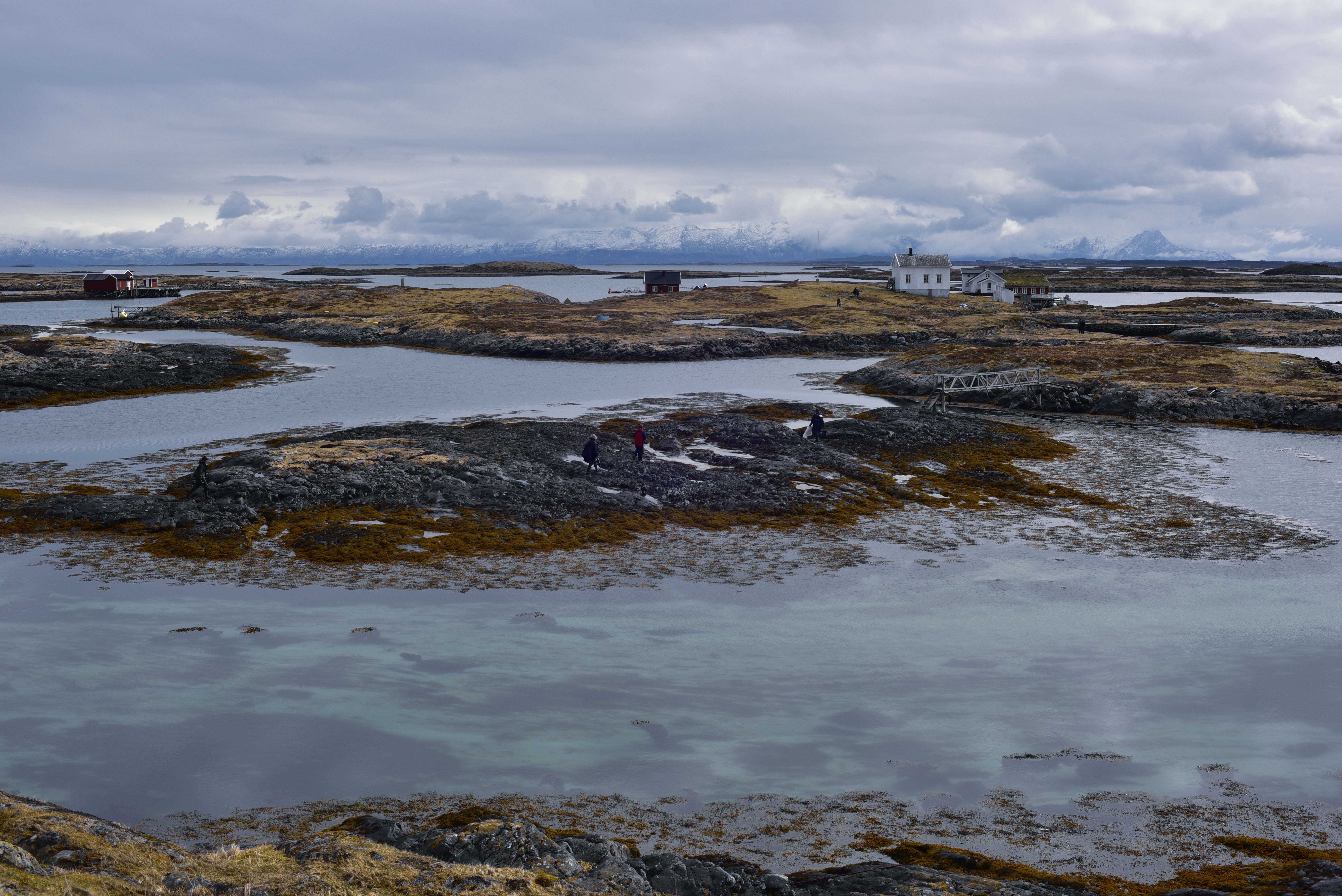
The islands of Hysvær
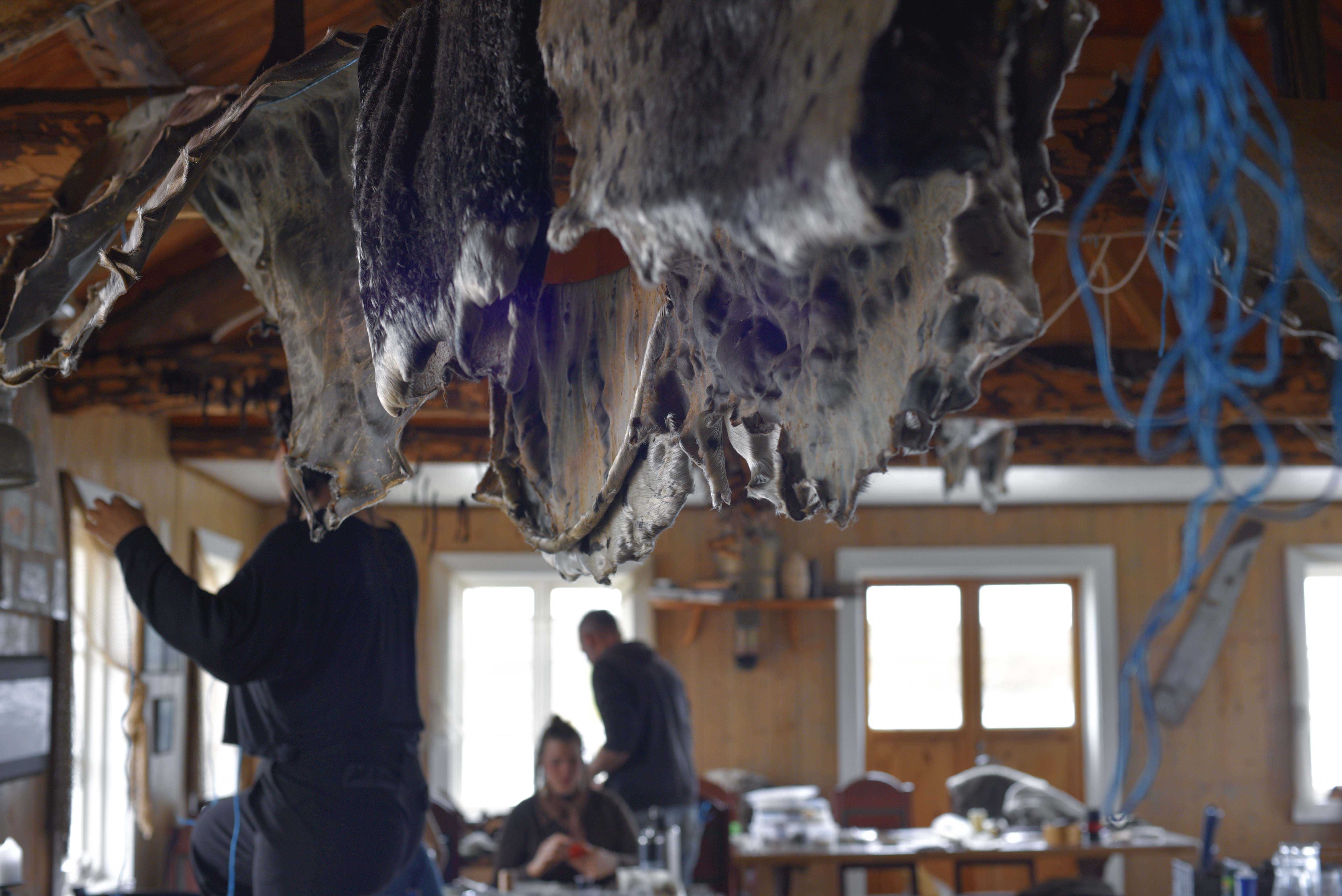
Hanging the sealskin hides to dry indoors
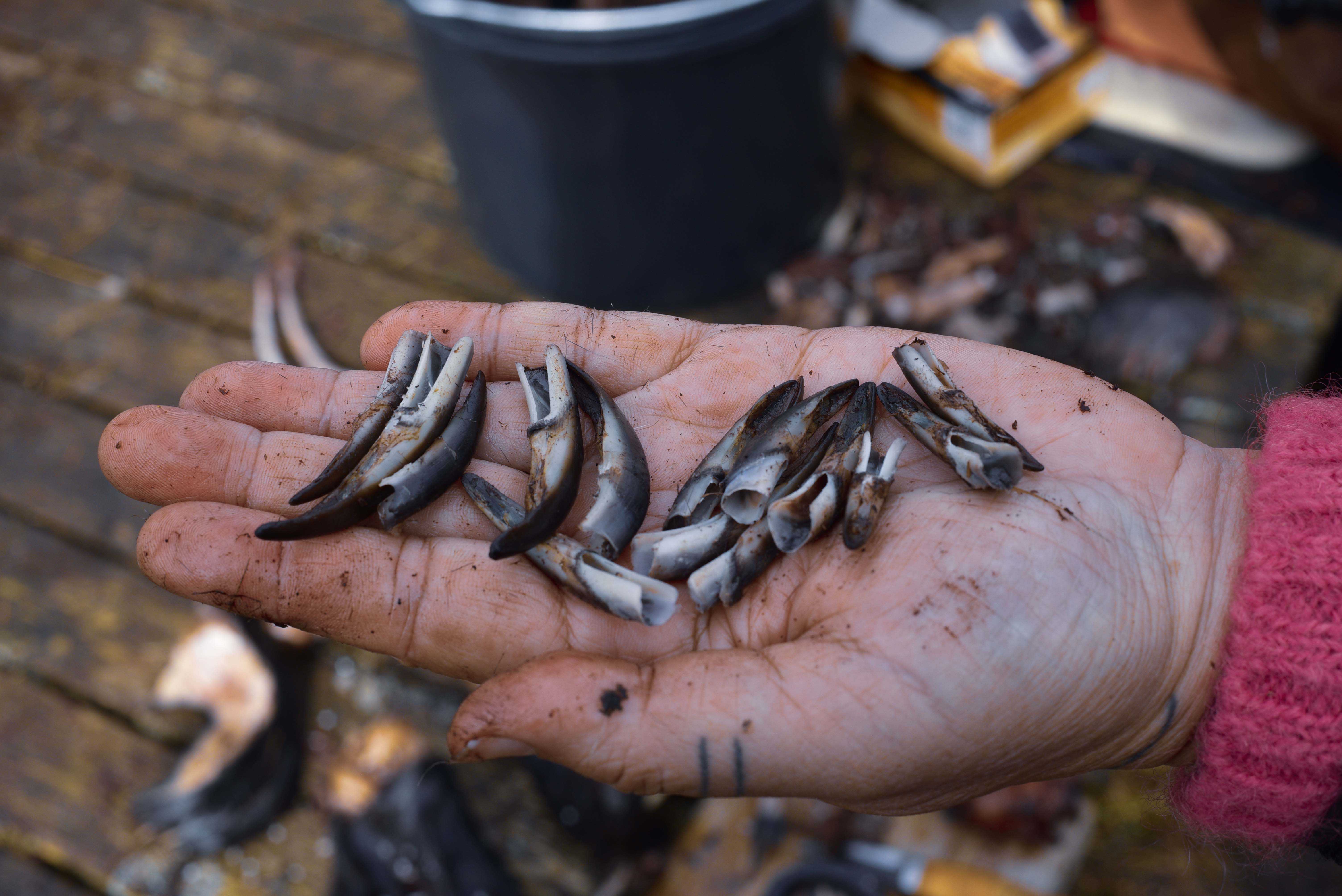
Harvesting the seal claws for artwork and jewelry
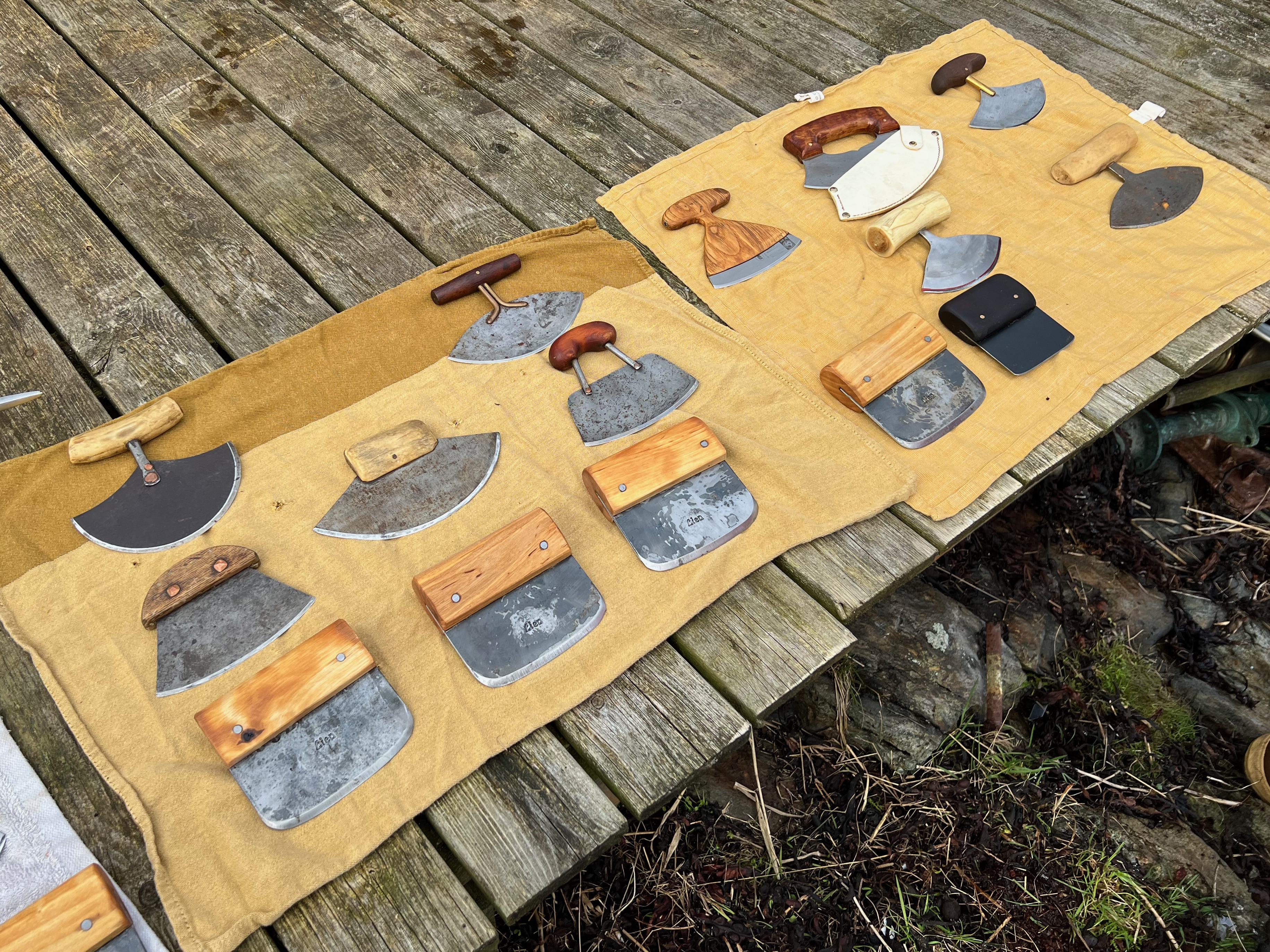
The many types of ulus and scrapers used for the workshop
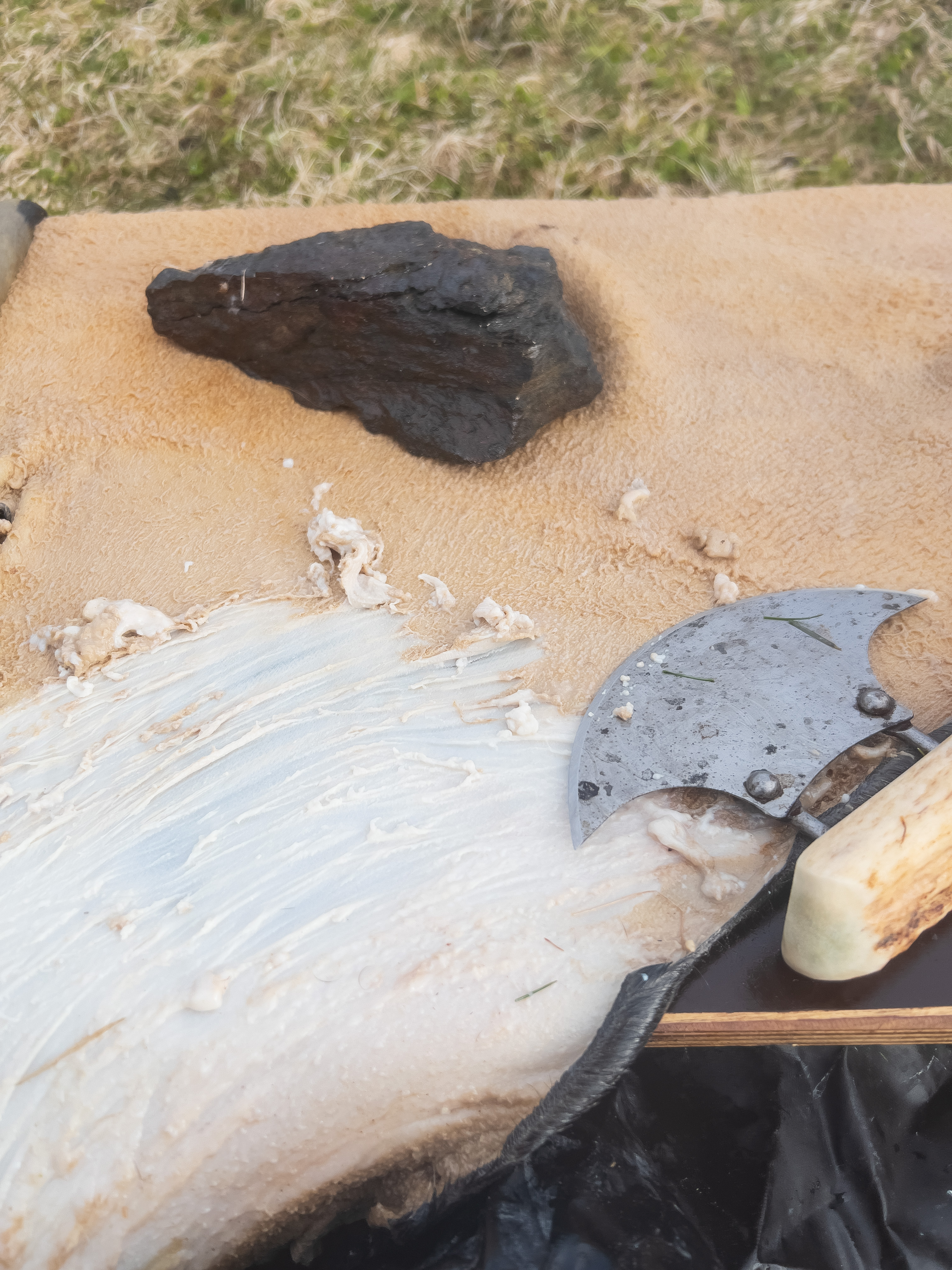
Processing the sealskin with an ulu
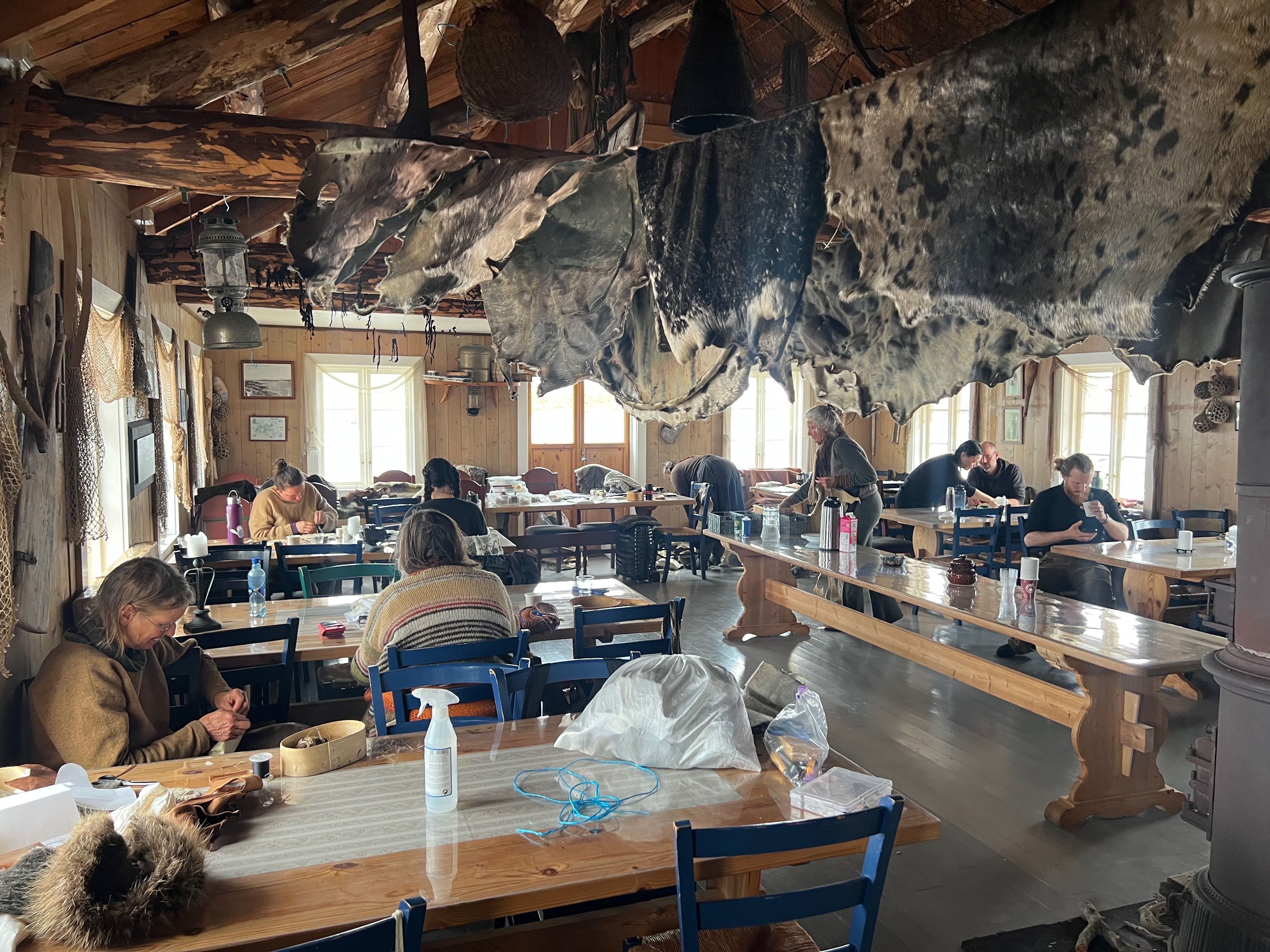
The participants working on mittens made from reindeer hide
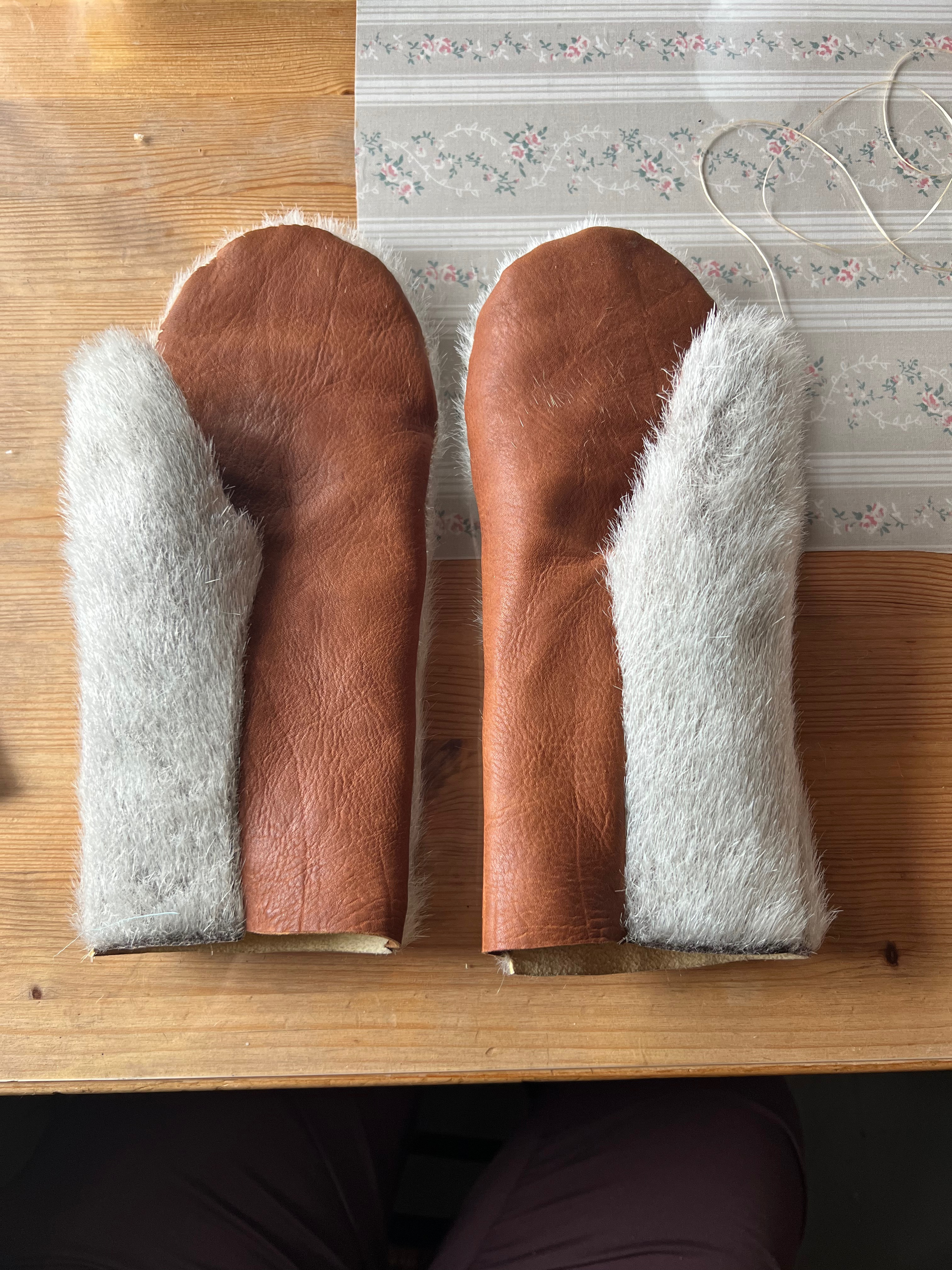
Mittens made from seal fur and reindeer hide

Sydney blowing up seal intestines to dry; Inuit used them to make waterproof clothing
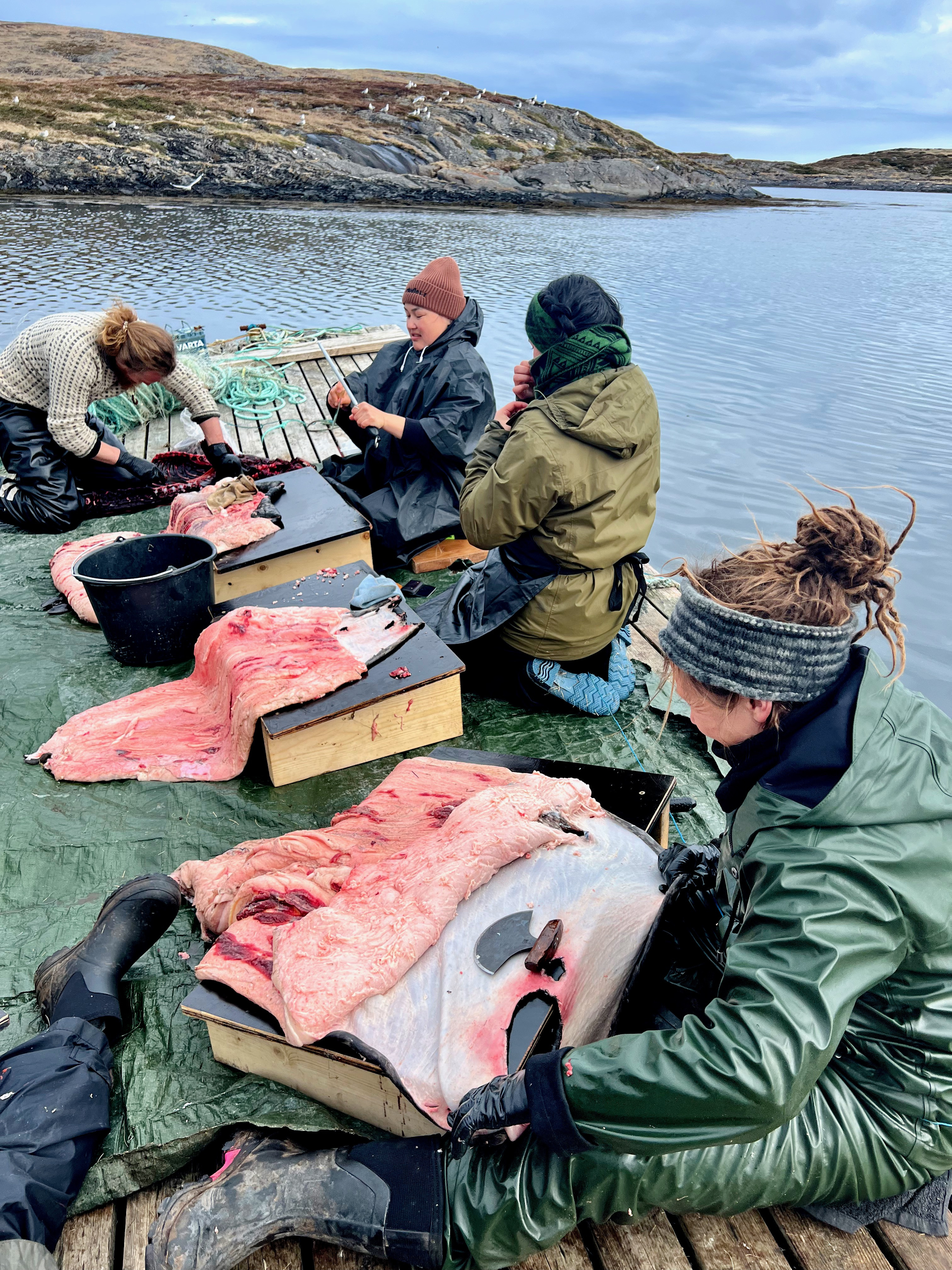
L-R: L-R Roni Ohman, Sophie Amondsen, Sydney Pascal, Sophie Kleppe scraping seal skins
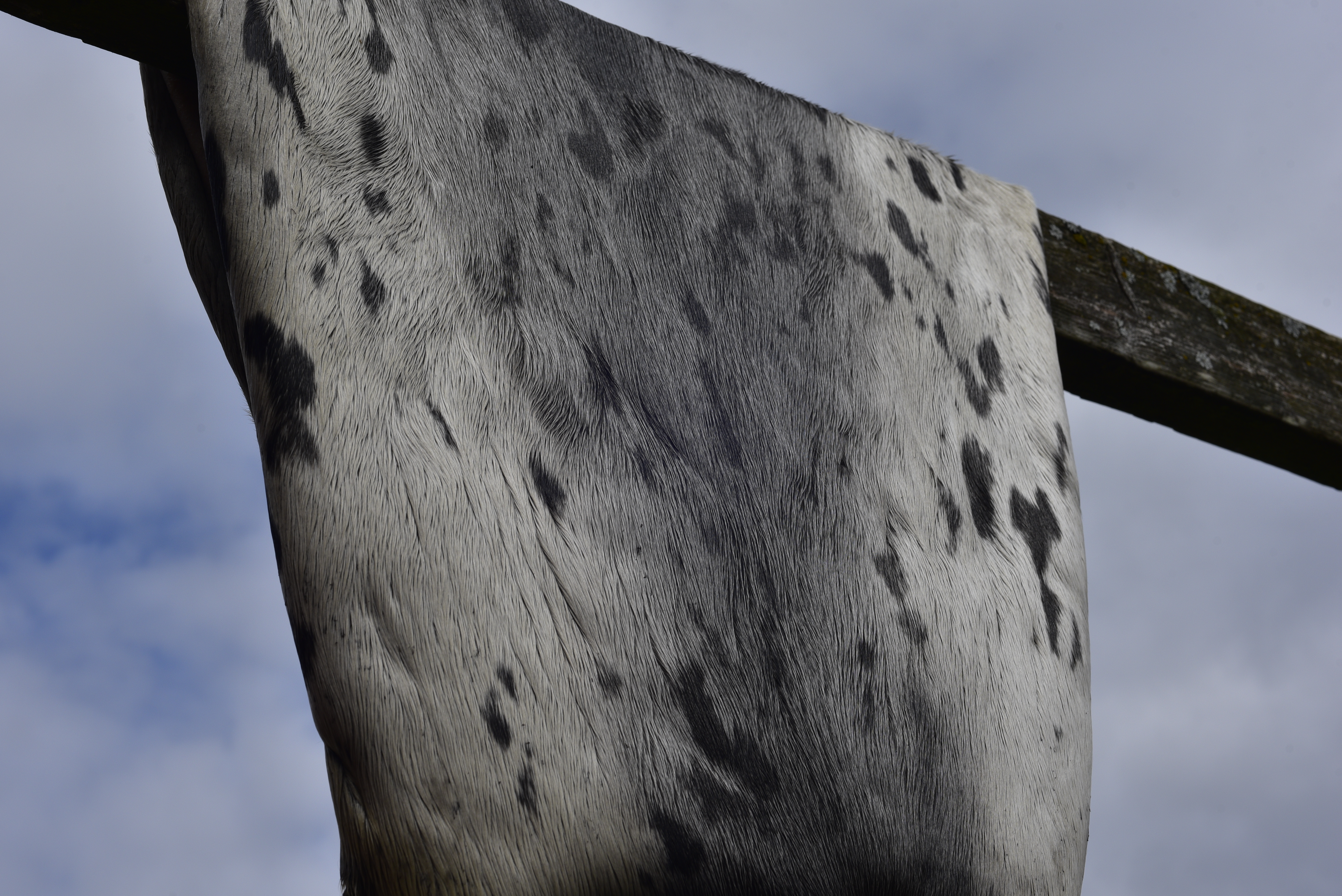
A stunning seal skin hide against the moody sky in Hysvær
Each day began with a walk over the rocks and across two narrow footbridges leading to the dock and boat house where the work would happen. Students received a sealskin and set themselves up on the land with a low table, a scraper and an ulu. Two successful hunts occurred during the week, yielding three seals, where Inuit instructor Louise Fontain shared the tradition of honouring the seal with a drink of fresh water before butchering.
Sofie Amondsen, an Inuk artist and researcher, shared her research on seal intestines and how different Inuit communities used them to make waterproof clothing. She demonstrated cleaning the intestines using the edge of a shell and then blowing them up, like balloons, to dry. Sydney and Kajola also harvested claws and whiskers to be used in their art practices and to make jewellery.
Kajola, Aboriginal Programs Manager with the AGP, who had no previous tanning experience, wanted to connect with Inuit culture and traditions. “I haven’t done any kind of hide tanning at all, but seals are important to Inuit communities,” says Kajola. “I’ve been thinking about ways to work with seal more directly rather than just ordering it and having it arrive ready to go.”
Sydney has been hide-tanning deer, elk and other land animals since 2018. Working with seals was an experience, unlike anything she had done before. The physicality of the work is quite different from that of processing land animals, which requires more upper-body strength to scrape and soften the skin.
The workshop also provided the opportunity to craft mittens out of sealskin and reindeer hide, which the Norwegian instructors work with year-round. On rainy days during the workshop, it was a treat to hunker down and get to know their fellow students.
They had not anticipated the pervasive smell of the seal on their work clothes. “Seal has a particular smell,” says Sydney. “I actually liked the smell, but we were all reeking of it. We were a little worried about travelling home!” The hides have been washed and framed to dry on the AGP balcony. Up close, Kajola and Sydney point out how soft the fur is and how you can see spots where the grease is being pushed out in the drying process.
The trip highlighted the importance of Indigenous-led teaching and served as a bridge to international collaboration. “Living on the West Coast, there aren’t really opportunities to learn from other Inuit how to work with seals,” Kajola reflects. “So that was very special.”